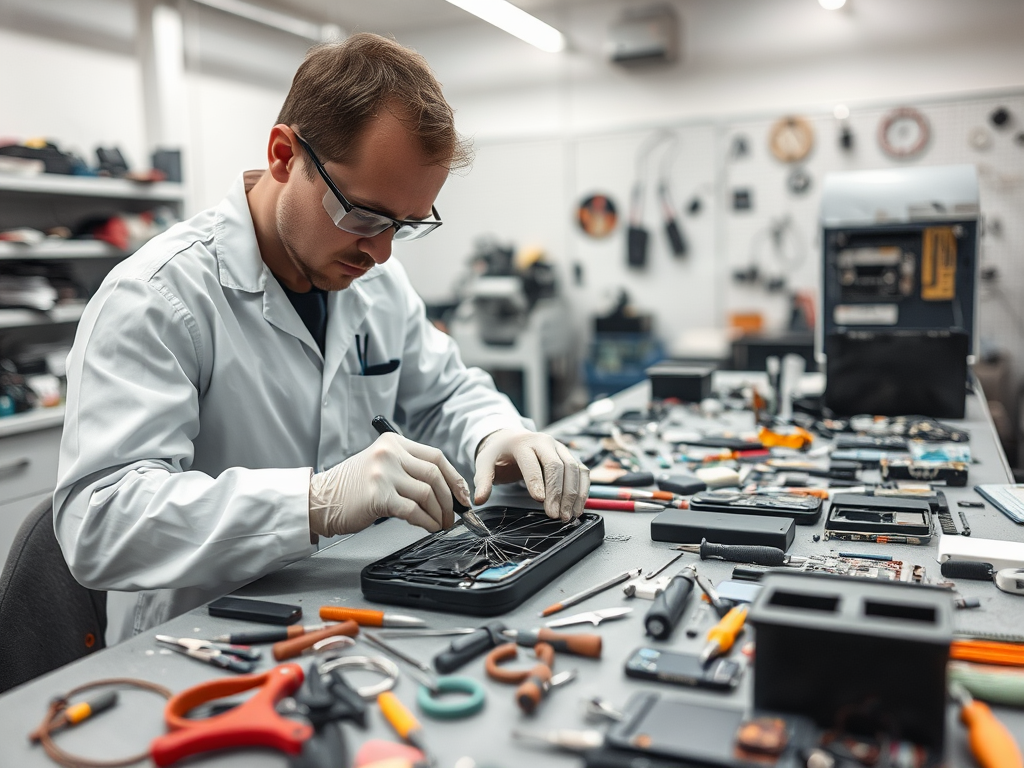The frustration of a cracked phone screen is an experience most smartphone users can relate to. Whether it happens during a casual day out or an unexpected mishap at home, a cracked screen can compromise both functionality and aesthetic value. Understanding the underlying issues related to cracked screens is not just about acknowledging a problem; it’s about exploring proactive solutions and prevention methods. This exploration will guide you through the common causes of cracked screens, the implications, repair options, and essential tips to prevent future mishaps. Knowing how to handle a cracked screen situation can save you time, money, and headaches in today’s fast-paced digital world.
Understanding Cracked Phone Screens

Cracking can stem from various factors ranging from physical accidents to environmental conditions. These issues may seem common, but the level of damage can impact user experience significantly. When a screen cracks, it can often lead users down a complex path of repairs, costs, and potential functional impairments. Hence, recognizing the potential dangers and consequences of a cracked screen is crucial. Being informed can help users react promptly and effectively when faced with this problem. With that in mind, let’s delve deeper into the most common causes of cracked screens.
- Accidental Drops: This is undoubtedly the most universal cause of screen damage, occurring in everyday activities.
- Pressure and Bending: Sitting on a phone or placing heavy items on it can cause stress fractures that compromise the integrity of the glass.
- Temperature Changes: Sudden exposure to extreme heat or cold can weaken the glass, making it more susceptible to cracks.
Implications of Cracked Screens

While a cracked screen might seem like a minor inconvenience at first glance, the implications can be far-reaching. The damage can lead to both aesthetic concerns and functional issues that may lower the overall performance of your device. Moreover, a cracked screen can deter potential buyers if you plan to sell or trade your phone, thus affecting its resale value. Not to mention, a visually impaired screen can hamper daily interactions, pulling users out of an enjoyable digital experience. Understanding these implications prepares users to act swiftly and effectively when confronted with a cracked screen. Let’s break down these concerns further.
Aesthetic Concerns
- Visual Distractions: Cracks can obstruct the visual display, detracting from media consumption.
- Resale Value: An aesthetically damaged device will likely fetch a lower price, making it a poor investment.
Functional Issues
Beyond aesthetics, a cracked screen can cause serious functionality problems. Users may notice a decrease in touch sensitivity, resulting in unresponsive areas on the screen. In more severe cases, the cracks might lead to screen malfunctions, such as unexpected blackouts or distortions. This not only hampers everyday usage but also increases dependence on external repairs or replacements. Therefore, what starts as a small crack can quickly escalate into a costly repair scenario. Being aware of these functional issues allows users to make timely decisions regarding their devices.
| Issue | Impact |
|---|---|
| Cracked Screen | Decreased functionality and potential injury risks |
| Display Malfunctions | Screen blackouts, touch unresponsiveness |
| Resale Value Drop | Lost financial returns when selling |
Repair Options for Cracked Screens
In dire situations, when faced with a cracked screen, users can consider multiple repair options. The most immediate choice may be to attempt a DIY repair; however, this route needs to be approached with caution. Many companies offer DIY repair kits that can be cost-effective. While this solution appeals to some, it also carries the risk of voiding warranties or causing further damage. Conversely, relying on professional repair services may provide a quicker and more reliable solution. Still, users need to weigh the costs and benefits of each approach thoughtfully.
DIY Repair Kits
- Pros: Usually cost-effective and allows for personal involvement.
- Cons: Risks of voiding warranty and possibly voiding eternal device aspects.
- Materials Needed: A basic toolkit, adhesive, and a clear replacement screen.
Professional Repair Services
Opting for a professional repair might come with a higher price tag but offers significant advantages. Manufacturers often provide services that maintain any existing warranties, ensuring the integrity of your device post-repair. Moreover, skilled technicians have the expertise to solve complex issues that may not be obvious to everyday users. If you are facing ongoing problems, the risks of a DIY approach may outweigh the benefits, making professional help the more prudent choice. Such considerations highlight the importance of evaluating your options thoroughly.
Prevention Tips to Avoid Cracked Screens
Taking preventative measures can save you grief and expense in the long run when it comes to cracked screens. Proactive users can significantly reduce risk factors by leveraging protective accessories and adopting mindful handling practices. The investment in protective gear, such as cases and screen protectors, is often far less than the costs associated with repairs. Furthermore, adjusting how you use and carry your device can make all the difference in avoiding accidents. Thoughtful handling along with appropriate accessories can extend the lifespan of your phone significantly. Here are some recommended strategies for prevention:
Protective Accessories
- Screen Protectors: These not only help absorb shocks but also resist scratches.
- Robust Phone Cases: Choose designs that can withstand falls and heavy pressure.
Handling Practices
At the core of prevention is the way users handle their devices. Mindful usage is essential, urging users to develop good habits from the onset. Avoid placing your phone in tight pockets or near heavy items that might crush it. When out and about, consider investing in a lanyard or strap to keep your phone secure. Moreover, fostering an awareness of your surroundings can greatly reduce mishaps. By addressing both the accessories and handling practices, users can create a fortified defense against cracks.
Conclusion
Understanding the common issues surrounding cracked phone screens is vital for smartphone users. By recognizing the causes, implications, and potential repair solutions, users can make informed decisions when faced with this everyday dilemma. Additionally, implementing preventive measures can prolong the lifespan of your device, saving you both time and money. As mobile technology continues to evolve, awareness and responsiveness in addressing such issues will help users navigate the landscape more efficiently. In the grand scheme of digital life, small steps can lead to significant benefits and peace of mind, ensuring your smartphone remains a seamless part of your daily routine.
Frequently Asked Questions
- How can I tell if my phone screen needs replacing?
If you notice significant cracks affecting touch functionality, visual display issues, or sharp edges, it’s time to consider a replacement. - Can I fix a cracked screen at home?
Yes, DIY repair kits are available, but ensure you follow instructions closely. Be aware that this may void any manufacturer warranties. - What should I do if I drop my phone?
Immediately check for visible damage and test the screen for touch responsiveness. If you notice any issues, consider seeking professional repair services. - Will a cracked screen get worse over time?
Yes, cracks can worsen if left unattended, leading to further damage and potentially affecting internal components. - Are there phone insurance options for cracked screens?
Yes, many phone insurance plans cover accidental damage, including cracked screens. Be sure to review the terms and conditions of your policy.



